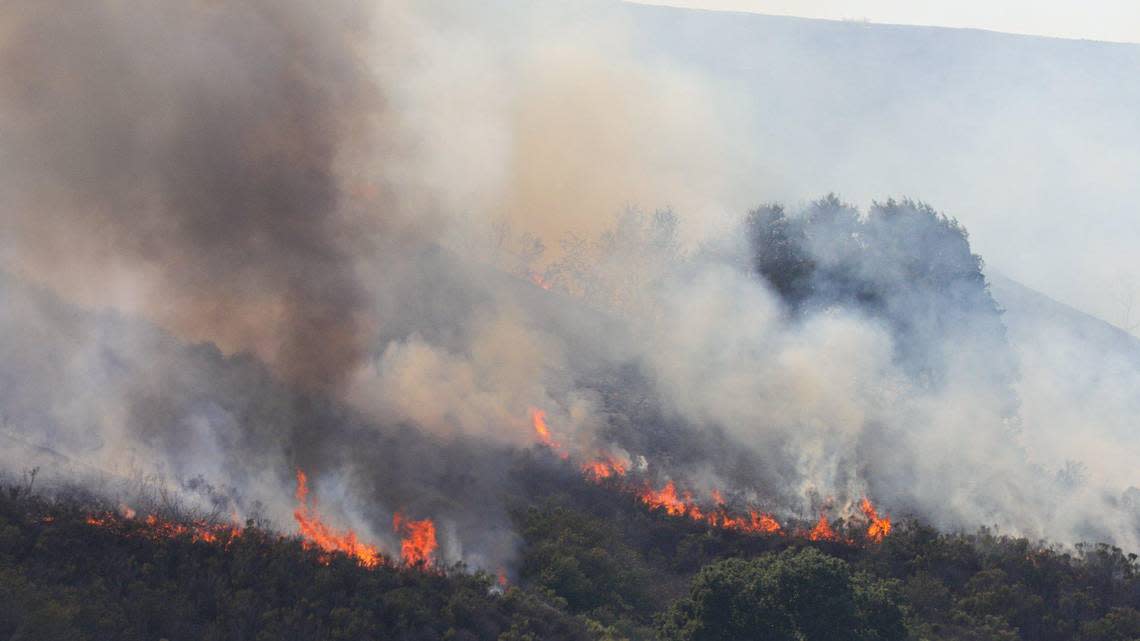California has had another calm wildfire season so far. Here’s why, according to experts
California is enjoying a relatively calm wildfire season this year, but the Sacramento region is not fully out of the woods. And don’t attribute this year’s mildness to climate change just yet.
The number of acres burned so far this year is less than one third of the five-year average, according to the California Department of Forestry and Fire Protection. Experts attribute the drop to this year’s historic winter storms and a record snowpack that soaked the state.
But those atmospheric river storms also created ample new vegetation growth that can act as fuel, state fire officials said. And with the help of gusty fall winds in the weeks ahead, wildfires could still ignite and grow through November or even into December.
“Now is not the time for people to let their guards down,” said Brian Newman, assistant chief of Cal Fire’s Amador-El Dorado Unit. “We still have fire season ahead of us before we get into winter rains that would finally end it.”
With 317,191 acres burned so far this year, it marks less than 30% of the five-year average of 1.2 million acres for the same year-to-date period. Even though a normal number of new fires have ignited, according to officials, the moist landscape and cool nights kept them at bay.
That means without a dramatic change in the trend, California will be experiencing its second straight year of mild wildfire after having endured California’s worst wildfire seasons on record.
Last year, fewer than 363,000 acres burned. This year’s largest fire, the Smith River Complex burning near the Oregon border, has stayed under 100,000 acres. In 2020 approximately 4.3 million burned, and in 2021, 2.6 million acres did.
Climate scientists are confident that warming temperatures have helped increase the severity and length of fire seasons. But many remain reticent to attribute this year’s mild wildfire season to climate change.
“I tend not to give much credence to the idea that single events and single summers or winters can be ascribed to climate change,” said Hugh Safford, chief scientist of Vibrant Planet and faculty of the UC Davis Department of Environmental Science and Policy.
“There’s no question that climate warming is having a major impact on expanding the fire season and increasing severity. But California has the highest inter-annual variability and precipitation of any state in the United States. It is normal to go from a record wet year to a record, or nearly record, dry year and that’s just the way it is.”

Although a field of science that connects climate change to specific weather events is advancing quickly, a recent controversy on the subject fueled a flurry of climate science skepticism.
Last month, scientist Patrick T. Brown at Johns Hopkins University said his recent paper — which found global warming had boosted the risk of fast-growing California wildfires by 25% — withheld the full truth. He said it did not account for vegetation growth and the state’s legacy of fire suppression because it would make the research more difficult to publish.
But the climate models seen by Erwan Monier, associate professor of climate change impacts at UC Davis Department of Land, Air and Water Resources, make him predict that this upcoming year’s combination of a strong El Nino and warmer ocean temperatures could lead to another wet year.
“This is most likely the configuration that will control California’s climate this winter, and will have implications for the next wildfire season. Because if we have another very wet winter, that means we’ll have even more moisture that could again lead to mild fires next year.”
Aside from wetter conditions, Cal Fire assistant chief Newman said there are other reasons to be optimistic. The state has made gains conducting more prescribed burns to reduce fuel in forests, and boasts of new firefighting technology including nighttime firefighting aircraft and artificial intelligence tools.
That said, Newman warns it’s not enough for Californians to let their guard down on wildfire.
“We want to make sure people create defensible space, trim back their grass and brush and things that can endanger their homes,” Newman said. “Especially in a year like this when there has been a lot of ability for those fuels to grow.”
